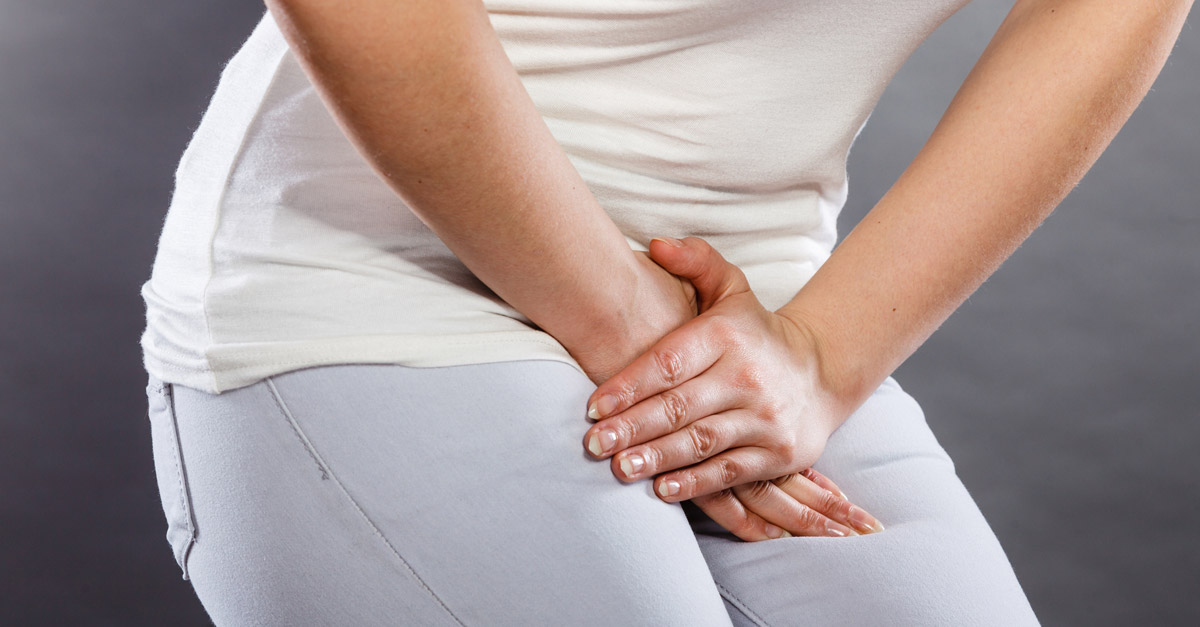Have you heard of post-micturition dribble? The term might not be familiar, but the sight of it probably is—a wet spot smack on the front of a man’s pants. It happens when the last few drops of urine leak out after a gent thinks he’s done using the bathroom. It can happen to women, too.
But you can fix it.
The first thing to know is that post-micturition dribble—which we will refer to as urinary dribble here—is not a sign of a dangerous health problem. It sure is annoying and embarrassing, though…a major cause of stress, not at all surprisingly.
How many people have urinary dribble is not exactly clear, but it’s not rare. A Finnish study, for example, asked people about it and found that 6% of adults between the ages of 18 and 79 have it—more men than women. In an American study, 11.8% of men and 8.5% of women between the ages of 30 and 79 said they have it.
According to Geo Espinosa, ND, LAc, the director of integrative urology at New York University’s Langone Medical Center, those percentages are probably low…because urinary dribble is the sort of problem that many people, especially men, are too embarrassed to admit having.
PMD is not caused by poor hygiene or problems with the bladder or, for men, the prostate. It differs from stress incontinence (involuntary urination caused by weakness of the pelvic floor muscles) or urge incontinence (urination caused by involuntary contraction of the bladder muscles). Although weakened muscle tone does cause urinary dribble in men—and we’ll explore the solution for that below—in women, it is not muscle weakness but rather anatomical glitches that are generally responsible for urinary dribble.
WHY WOMEN DRIBBLE AFTER THEY PEE
Urinary dribble is occasionally found in women who have anatomic abnormalities that prevent complete emptying of the bladder. Abnormalities include…
• A tiny pouch, called a diverticulum, on the wall of the urethra (the tube that carries urine out of the body). Urine can become temporarily trapped in this pouch, only to trickle out later. Most women adapt to having a diverticulum and wear a pad to catch moisture. Another option is to have the diverticulum surgically removed.
• An abnormal opening between either the vagina and bladder or vagina and ureter (a tube that connects the kidney to the bladder) through which urine can leak. This kind of abnormality is corrected by surgically sealing off the opening.
WHY MEN DRIBBLE
For men, gravity and muscle weakness are responsible for urinary dribble. The male urethra doesn’t run in a straight downhill line. It has a little dip in the middle of it, creating a pool where urine can collect. Normally, a muscle called the bulbocavernosus that fits around the urethra will automatically squeeze to force the urine out, but this muscle can lose its tone, especially in men older than 50. Instead, movement and gravity will cause the last few drops of urine that pool up in the dip of the urethra to involuntarily spill out of the body at an unpredictable time, leading to those embarrassing wet spots.
STRENGTH TRAINING FOR MEN WITH URINARY DRIBBLE
The problem is correctable. “Like any other muscle, the bulbocavernosus will be strengthened only by working it out,” said Dr. Espinosa. The muscle is part of the pelvic floor, the area between the scrotum and the anus. To work the pelvic floor muscles, sit or lie down. Then tighten your muscles as if you were trying to hold in your urine (and trying not to pass gas). Don’t hold your breath or squeeze muscles in your abdomen or buttocks, as some men tend to do, because the extra effort will make focus on the pelvic floor muscles more challenging.
Hold those muscles tight for 10 seconds and then relax for 10 seconds. Repeat this exercise six to 10 times for one set, and complete two or three sets each day. You may have guessed it—this is the male version of the Kegel exercise, an exercise that many women do to strengthen their pelvic floors.
In his practice, Dr. Espinosa recommends a biofeedback session or two for a man to most effectively learn how to work his pelvic floor muscles. Here’s how it works. Band-Aid–like stick-on sensors are placed around the pelvic area, and a small rectal sensor is inserted a little way into the anus. Sensors are also placed on the abdomen. How does all that go over with patients—especially the rectal sensor? Dr. Espinosa told me that his patients don’t mind. The sensors are small and do not cause discomfort. All together, they help the biofeedback therapist see which pelvic muscles are being used. The therapist can then guide the patient to contract only the muscles that need strengthening to prevent urinary dribble.
Urinary dribble is cured within three months in about 60% of Dr. Espinosa’s male patients. The remaining 40% achieve partial cure and adapt to living with some dribble, although a few may need surgery to correct the problem. The key to cure, he emphasized, is to be very regular and disciplined about doing the exercises.
And as a big bonus, Dr. Espinosa added, exercising the bulbocavernosus muscle can help sexual performance, because that same muscle also helps create and maintain erections. You get a two-for-one!


